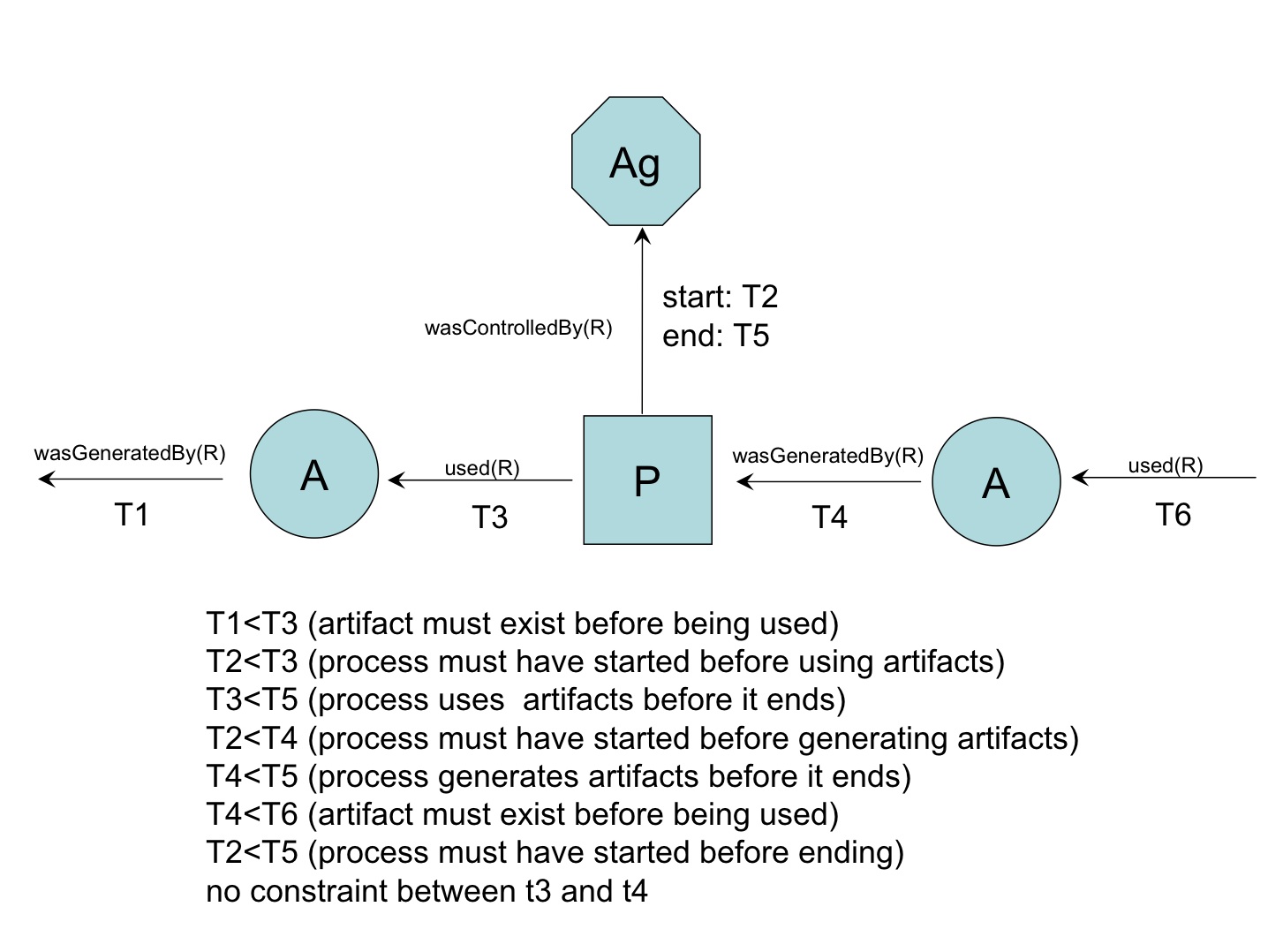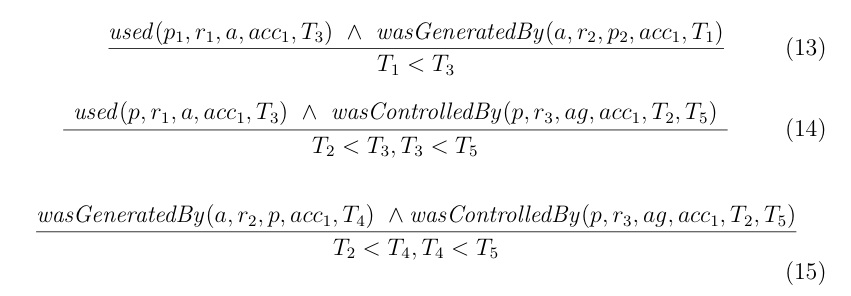Start of topic | Skip to actions
Open Provenance Model Contents
According to Figure 14, an artifact must exist before it is being used (T1 < T3 and T4 < T6). If an artifact is used by a process, it will actually be used after the start of the process (T2 < T3). A process generates artifacts before its end (T4 < T5), and a process starts precedes its generation of artifacts (T2 < T4) and its end (T2 < T5).
Equipped with these definitions, Figure 15 formally states the time constraints illustrated by Figure 14.
Equation (13) states that generation of an artifact precedes its use. Equation (14) requires a process to start before it uses artifacts, but after the artifact that caused it was generated; the use of the artifact taking place before the end of the process.
Equation (15) states that generation of an artifact by a process is preceded by the start of the process and takes place before the end of the process.
does imply lack of causality.
-- PatrickPaulson - 18 Aug 2008
to top
- Introduction
- Basics
- Overlapping and Hierarchichal Descriptions
- Provenance Graph Definition
- Timeless Formal Model
- Inferences
- Formal Model and Time Annotations
- Time Constraints and Inferences
- Support for Collections
- Example of Representation
- Conclusion
- Best Practice on the Use of Agensts
- References
8 Time Constraints and Inferences
The model of causality in OPM is essential timeless since time precedence does not imply causality: if a process P1 occurs before a process P2, in general, we cannot infer that P1 caused P2 to happen. However, the converse implication holds assuming time is measured according to a single clock. We therefore expect time annotations to be consistent with causality. To this end, we extend the definition of legal account view, defined as: an acyclic account view, which contains at most one wasGeneratedBy edge per artifact, and in which causation is time-monotonic, as displayed in Figure 15, and discussed below.

Figure 14: Time Constraints in the Open Provenance Model
We remind the reader that all observed times are pairs of instanteous time values. For T1=(t1m, t1M), with t1m≤ t1M, and T2=(t2m, t2M), with t2m≤ t2M inequality is defined as follows:
|

Figure 15: Causation is Time-Monotonic
Comments
"The model of causality in OPM is essential [sic] timeless since time precedence does not imply causality" is too strong -- OPM is not timeless, since lack of time precedenceto top
| I | Attachment  | Action | Size | Date | Who | Comment |
|---|---|---|---|---|---|---|
| | time.jpg | manage | 196.9 K | 31 Jul 2008 - 01:25 | PaulGroth | |
| | fig15.jpg | manage | 51.0 K | 31 Jul 2008 - 03:11 | PaulGroth |